Nigel Guérin-Garnett
Counterbalance: Corporeal Datafication Through Choreography
Summary
Contemporary dance offers a rich context to investigate human-led integrations of artificial intelligence (AI) in society, due to its inherent corporeality within creative production. Focussing on the human body, this research considers the impact of intelligent digital agents within creative processes, using choreography as the medium. Through the practice as research methodology employed, a novel method has emerged whereby non-human actors, such as machine learning algorithms built on Big Data, may be implemented through more balanced means.
Developed iteratively, this choreographic system design assimilates artistically intuitive and digitally-based computational inputs to remotely communicate between sender/researcher and interpreter/participant. It is envisaged that this technologically affected material may promote questions about AI advancements within artistic pursuits, towards a rebalancing of the information economy. This research practice is positioned as a form of counterbalance, to challenge the increasing deployment of data collection technologies such as human gait recognition for corporate gain.
Additional info
Choreographing is an artistic act that often requires different agents within its creative process. For this project I have taken the role of choreographer and researcher, working with two dancer participants. Through an East London Dance award I was able to collaborate with dancers from Company Wayne McGregor, and carry out the central research practice in their purpose-built premises. Considering the multiple variables intrinsic in pursuing the interdisciplinary nature of this work, building from a common physical and verbal vocabulary was important. Our similar dance conservatory backgrounds and interest in the digital-physical dynamics of contemporary dance enabled a deeper inquiry, and fostered a fruitful research environment during our exploratory sessions.
Machinatia
Machinatia is how I have titled my choreo-technological research practice. For this research, it has materialised through a series of choreographic workshops. Borrowing from Graham technique, where movement originates from a deeply individualised contraction, I explored choreographic development by artificial instigation through custom-built wearables. These remote operated garments are the result of extensive prototyping with different materials and constructions. They act as translators, catalysing digital material into physical through the dancers' improvisations. The physicalisation of computational data generated during these experiments may be re-inputted into this creative process, conceptually aligned to how an AI can advance itself through machine learning. Although the dominant agents within my choreographic system are human.
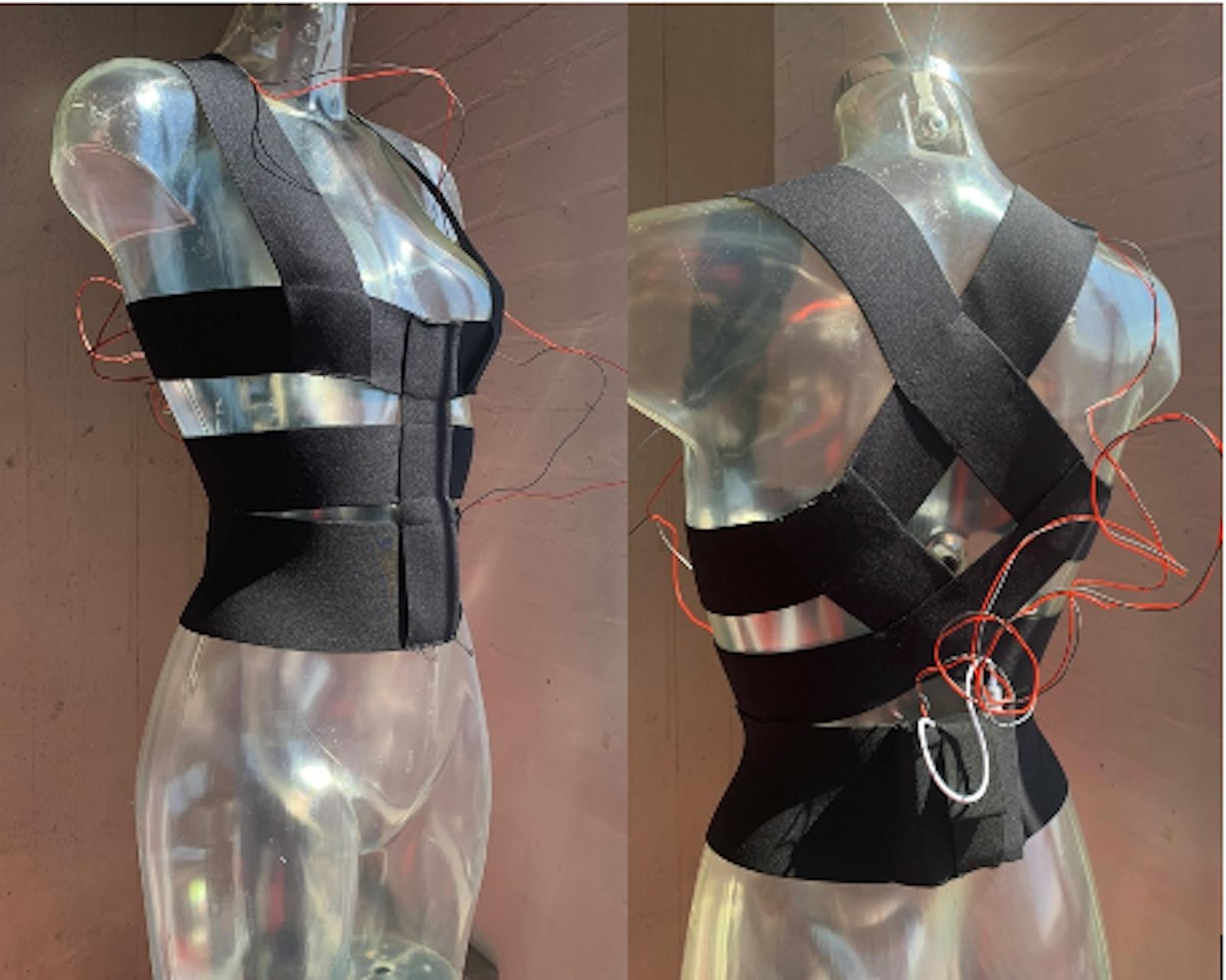
Close up of wearable apparatus (Guérin-Garnett 2022).

Developing choreographic material at Studio Wayne McGregor (Petrikovic 2022).

Teaching repertoire at Studio Wayne McGregor (Petrikovic 2022).
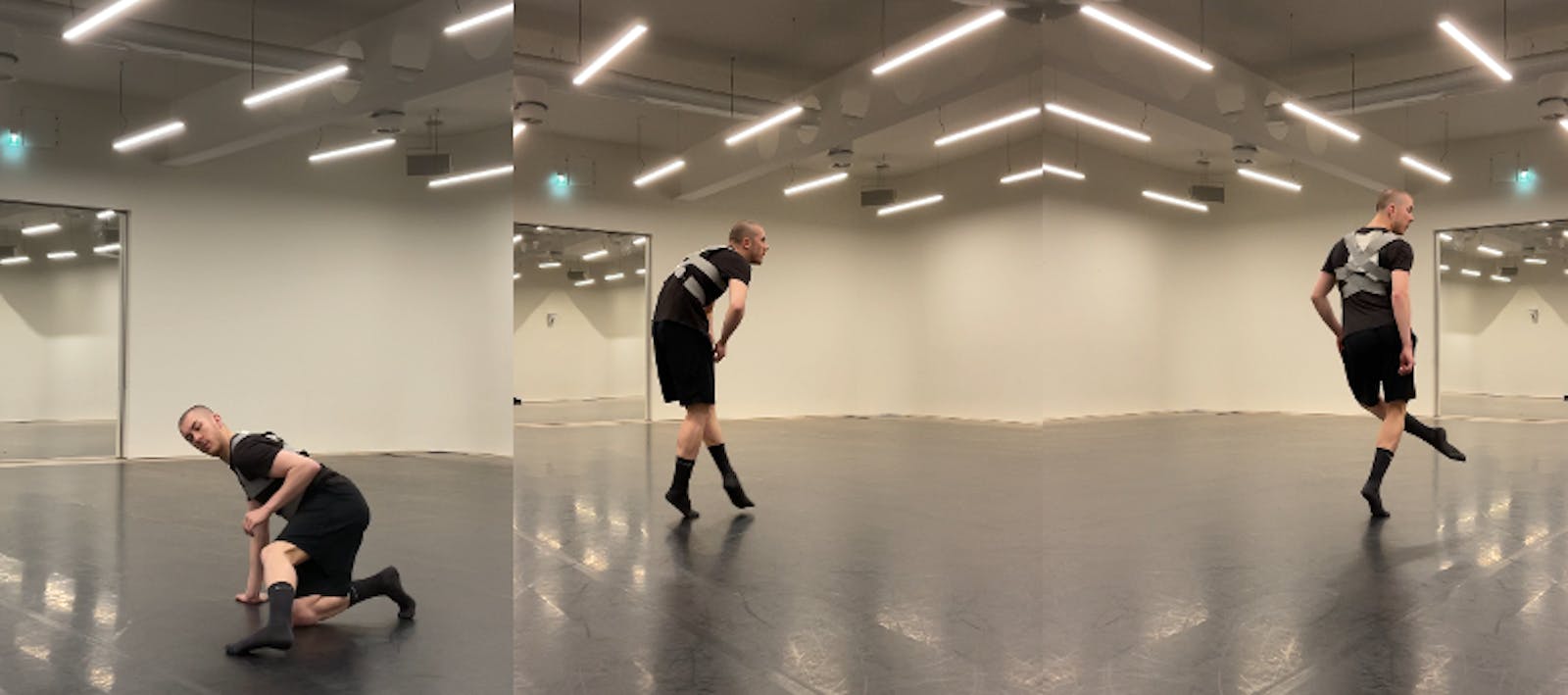
Research participant trialling the first prototype in Studio Wayne McGregor, responding to the physical stimulus provided by the wearable (Guérin-Garnett 2022).
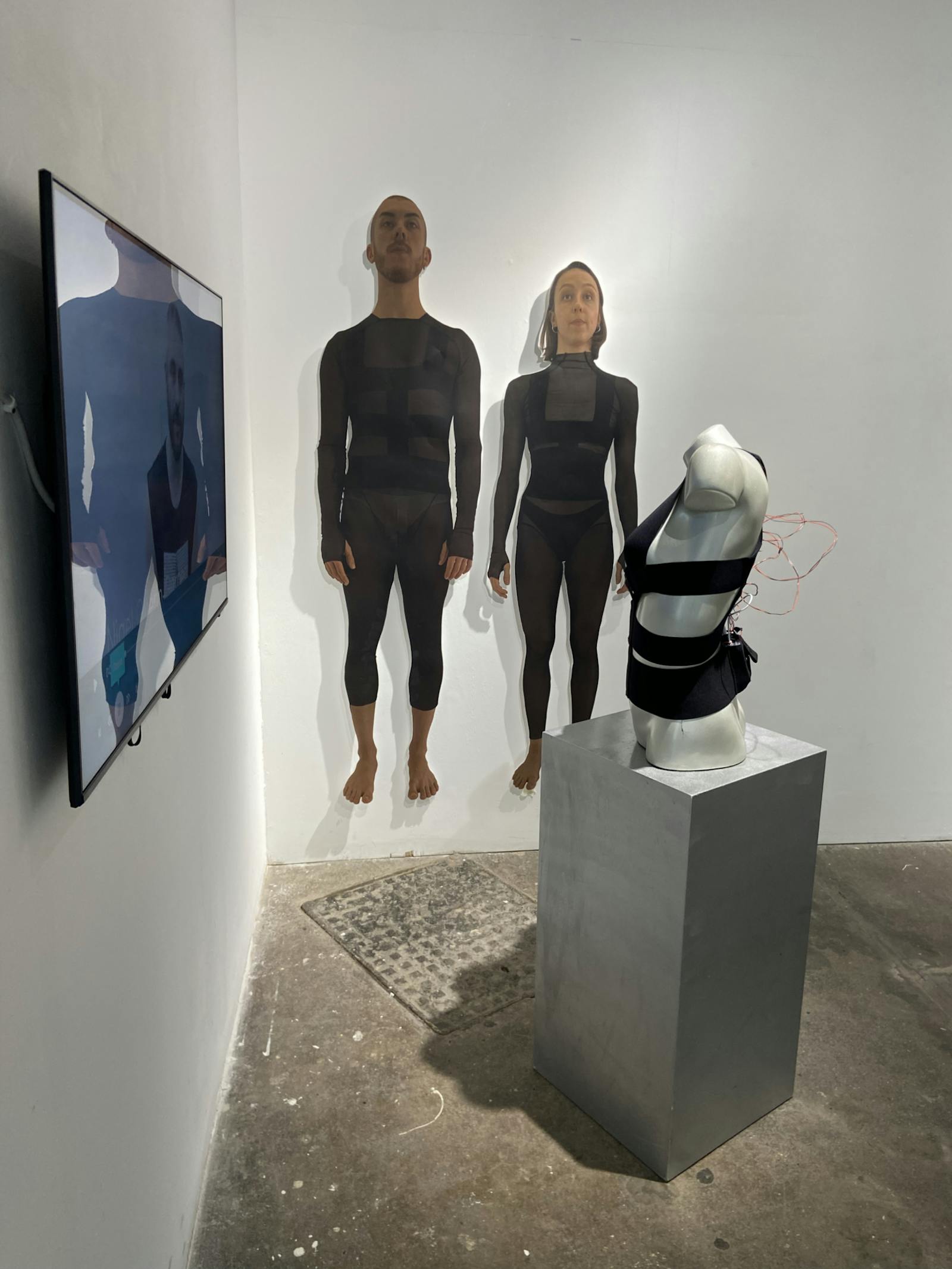
Final presentation, side view (Layton 2023).
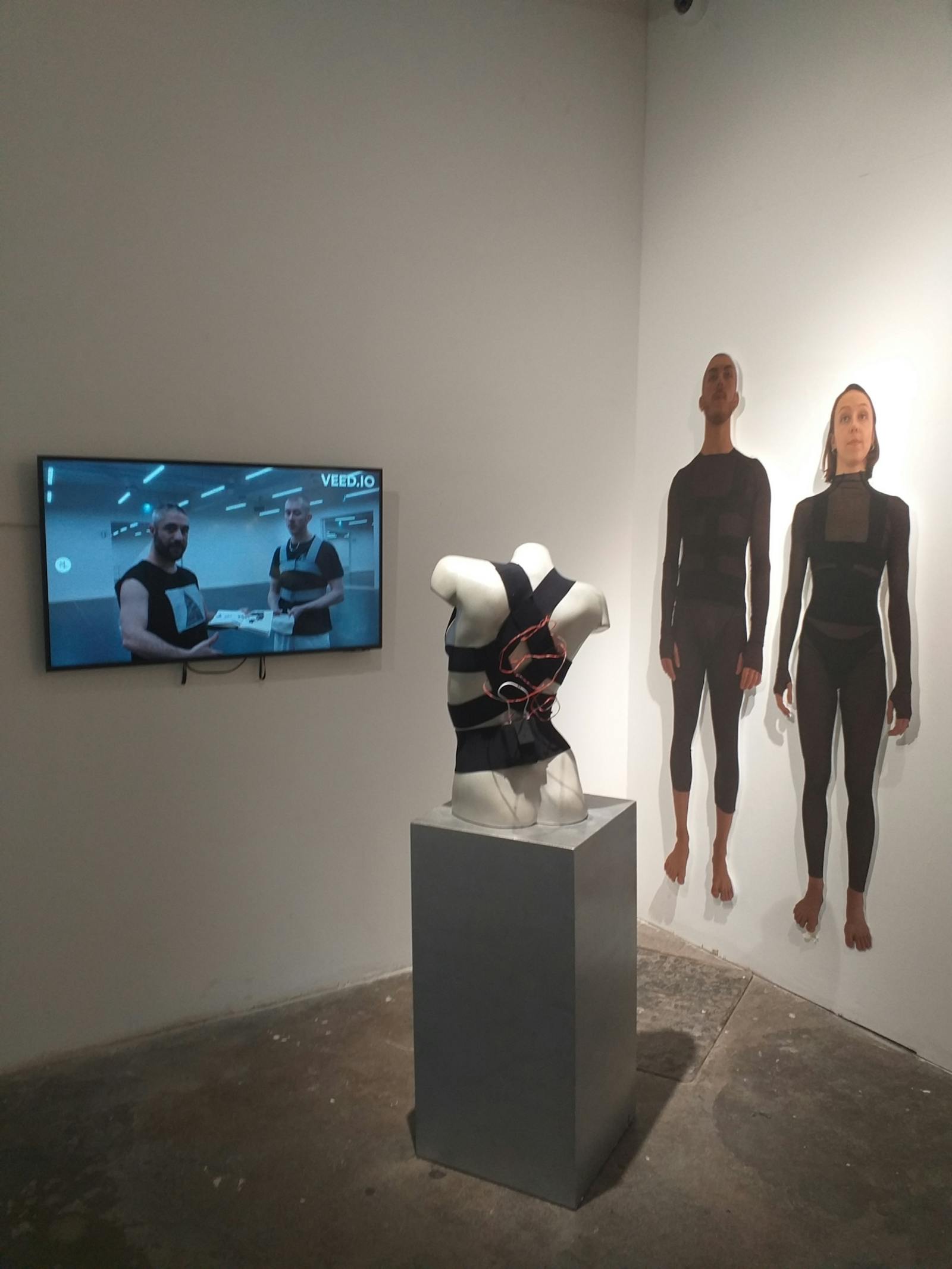
Final presentation, front view (Stavrou 2023).
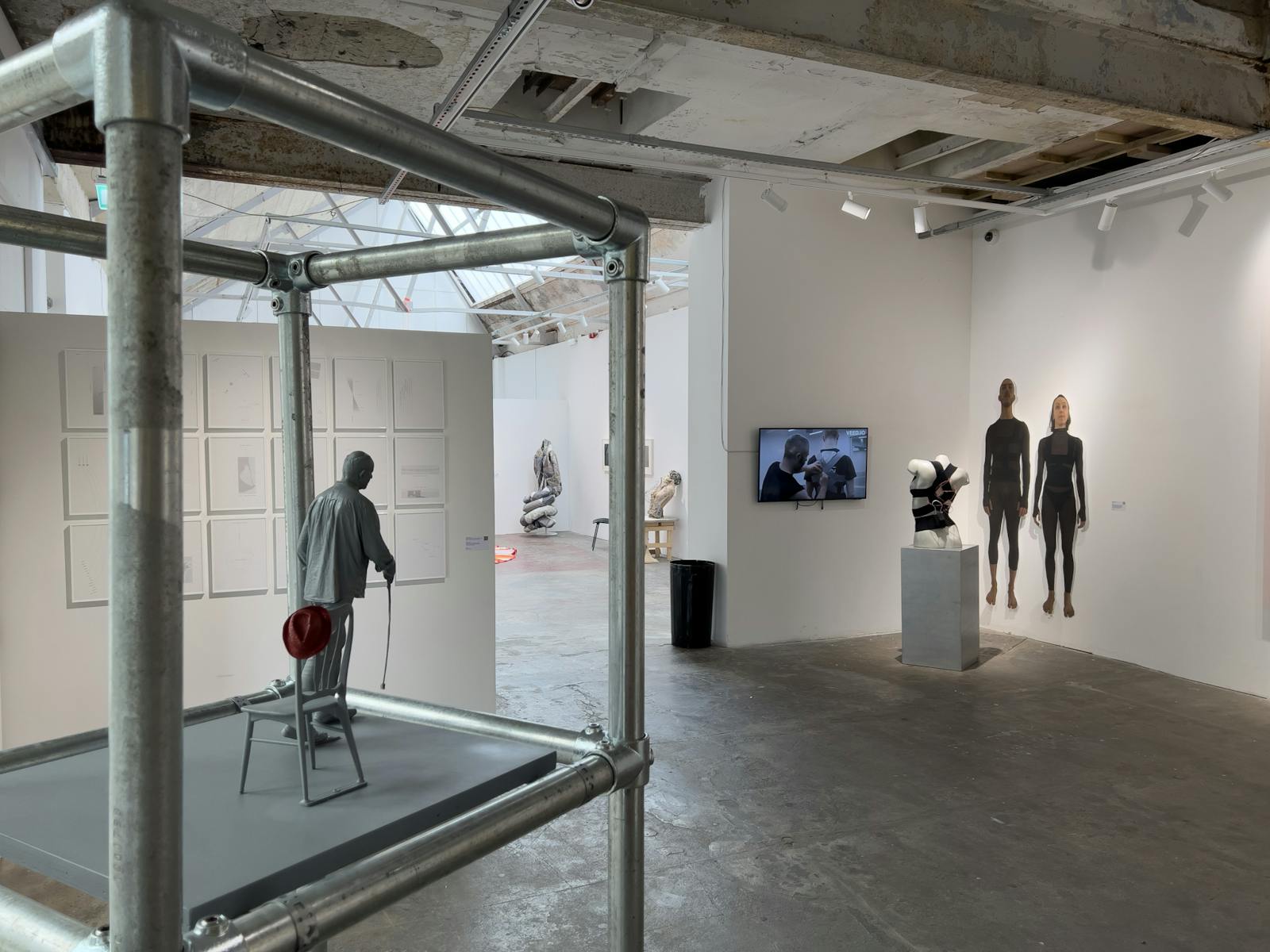
Show installation (Jeong 2023).
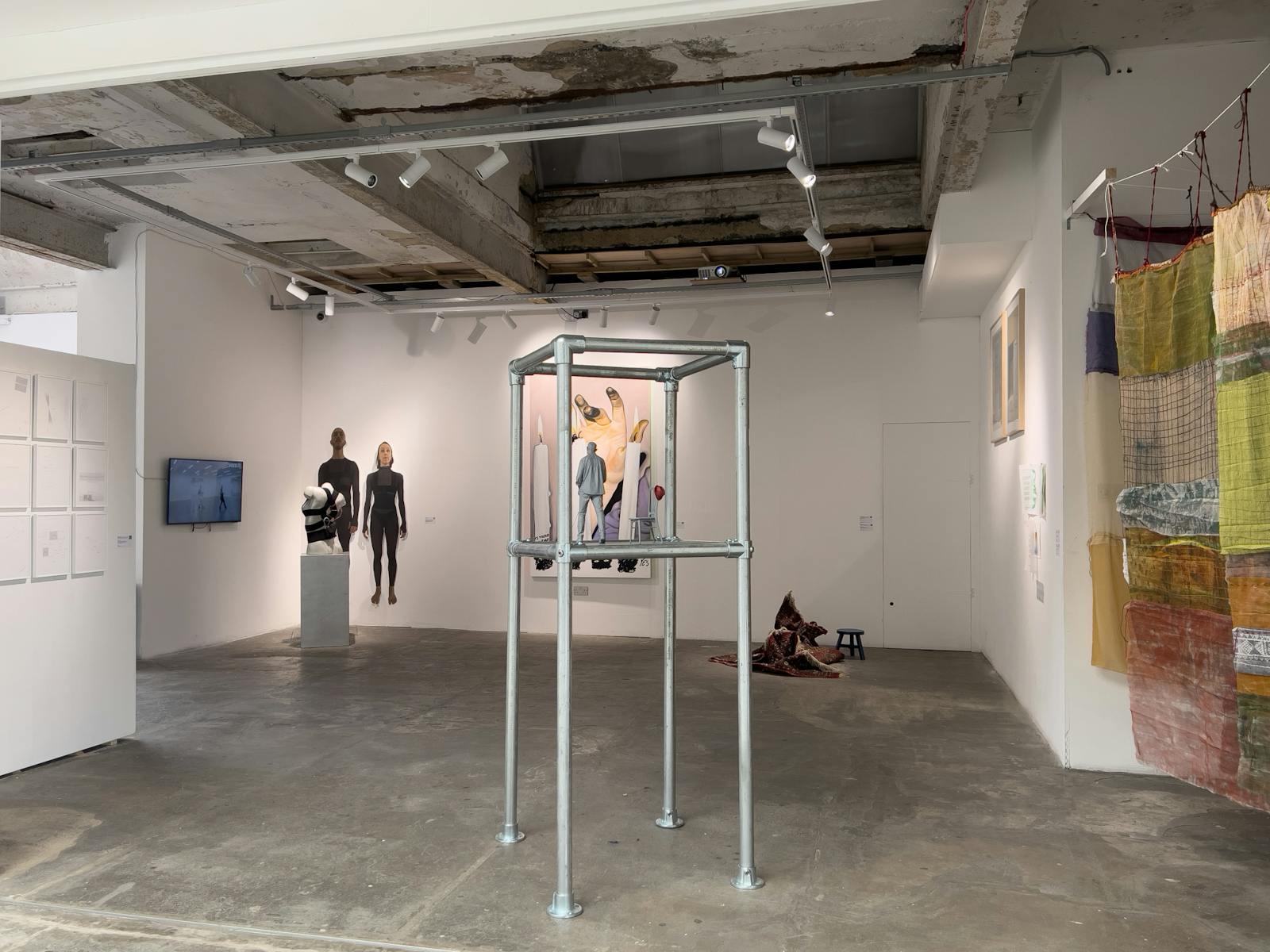
Show installation (Jeong 2023).
